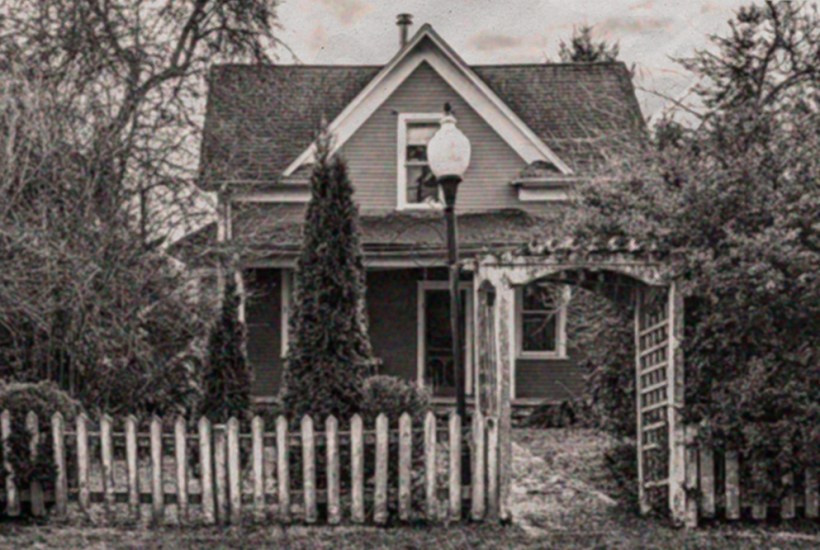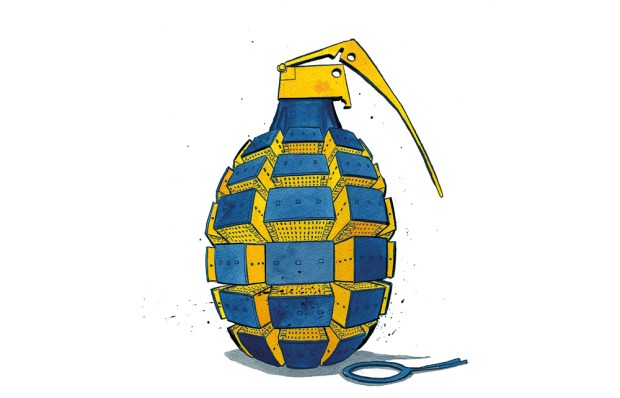On the window ledge of my sister Carmel’s bedroom there’s a tray of cards inscribed with the months of the year, days of the week and numbers from 1 to 31. If you can be bothered to adjust the display every morning, you’ll have what’s called a ‘perpetual calendar’.
Sunday 3 October 2021 was the day Carmel’s calendar stopped being perpetual. That morning she woke up with a fever so alarming that her next-door neighbour called an ambulance. Before it arrived, Carmel changed the calendar; then she kissed goodbye to Otto, her Norfolk terrier, walked downstairs and left her house for ever. The next day, another ambulance took her from the Royal Sussex Hospital to Guy’s Cancer Centre. She died there seven weeks later.
The calendar hasn’t been updated. Slotting those cards into place was the last domestic task of my sister’s life – not that she needed to do it, but Carmel’s personality was a mixture of the carefree and the meticulous. She was my only sibling; she didn’t have a partner and neither of us had children. When our mother died in 2018, she said: ‘It’s just us now. We have to look out for each other.’ Three months later she was diagnosed out of the blue with stage-four ovarian cancer. And after she died, I discovered that she’d looked out for me by leaving me her house.
When she was alive, I loved the place. You could fit my whole flat into her kitchen, extended at vast expense into a garden with Japanese fishponds and a gazebo. My sister, normally careful with money, splashed out when she moved there six years ago because this was her ‘forever house’. If she lived as long as our mother, it would need to last her until 2058.
When she was diagnosed, she refused to look at the mortality statistics. Her ‘healthy denial’, as she called it, was a heroic exercise in anxiety management. Only in the last months did unreality creep in, as Carmel commissioned redecorations that would take years to finish. Until days before the end, she refused to acknowledge that she was dying. When she finally did, the acknowledgement was tacit. She suddenly wasn’t interested in the new carpet in the spare bedroom.
She never saw that carpet, of course, nor the first flowering of the orchid in her bathroom. She never smelled the lavender bushes she planted. These would have been sources of delight: Carmel had the gift of deriving huge pleasure from tiny things, such as the table decorations at her last Christmas, even while filing away letters from the specialist describing the progress of her disease.
On the other hand, if she could see her house now there would be things she didn’t like. Above the fireplace she hung an acrylic landscape that Beverly from Abigail’s Party might have admired while swaying to Demis Roussos. ‘Sorry, sis,’ I muttered as I replaced it with the picture that hung there before. It was in the lounge, which was what our parents called the sitting room. So did Carmel. When she used the word I rolled my eyes snobbishly. She shot back: ‘Damian, you’re from Reading.’
The dozen or so photos of Otto, now in a new home, have disappeared. Carmel knew I hated him; he’d attack you without warning like a giant rat. I also unscrewed a metal plate in the downstairs loo, a facsimile of a notice from the old Brighton Railway denouncing ‘the dangerous and objectionable habit of spitting’. I was so sick of reading those words every time I went for a pee. But the holes on the wall reproached me for my snootiness and so I screwed it back on.
There have been lots of these silly dilemmas and my policy has been to avoid them by staying in London. I don’t like the place any more. How can I relax on the sofa where my beautiful sister should be slurping prosecco while watching Grace and Frankie?
When I go back, it’s for Moira’s sake. She’s my cat, incorrigibly naughty with a stunning white coat. Alas, she pays a heavy price for it. The genes that produce it also make her stone deaf, so it’s not safe to allow her outside in London. Carmel’s garden is Moira’s paradise: she can fling herself at the nearest tree while I wait to pull her down before she escapes. When I take her inside, she wails for a solid hour. Then she punishes me by indulging her passion for testing gravity, knocking every conceivable object off every conceivable surface. She’s the reason for the house’s new minimalist chic: no pot plant, ornament or vase is safe. Recently her repertoire has expanded to include electronic goods. It’s thanks to her that I know that replacing a cracked iPad screen costs as much as buying a new model.
But I can’t blame the cat for the scattering of Carmel’s perpetual calendar all over the bedroom floor. That was her clumsy brother. I dutifully put the pieces back to Sunday 3 October 2021, but the spell was broken. It wasn’t poignant any more, just ghoulish. And that was the moment I decided to sell the house.
One of the best descriptions of addiction I know is that it’s the progressive replacement of people by things. I don’t think the impulse is confined to addicts; it’s also part of bereavement. We exaggerate our sentimental attachment to objects that remind us of lost family members. My poor sister did that; she never threw anything away.
When I visit her house for the last time, I need to remember that I already have drawers full of Thompson memorabilia. Most of this stuff doesn’t provide nostalgic comfort; it just reminds me that everyone is dead and I’m next.
And there’s another factor to consider. One of the objects Carmel hung on to was a statuette of Don Quixote that took my father’s fancy during a holiday to Spain in 1973. I thought it would look nice on my mantelpiece. Moira thought it would look nice shattered on the floor. Problem solved.
Got something to add? Join the discussion and comment below.
Get 10 issues for just $10
Subscribe to The Spectator Australia today for the next 10 magazine issues, plus full online access, for just $10.
You might disagree with half of it, but you’ll enjoy reading all of it. Try your first month for free, then just $2 a week for the remainder of your first year.














Comments
Don't miss out
Join the conversation with other Spectator Australia readers. Subscribe to leave a comment.
SUBSCRIBEAlready a subscriber? Log in